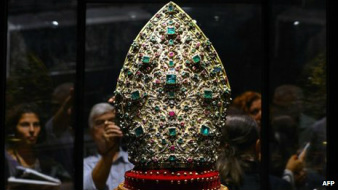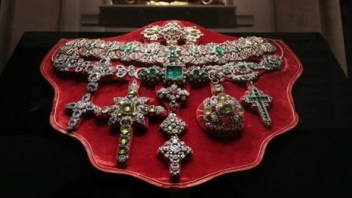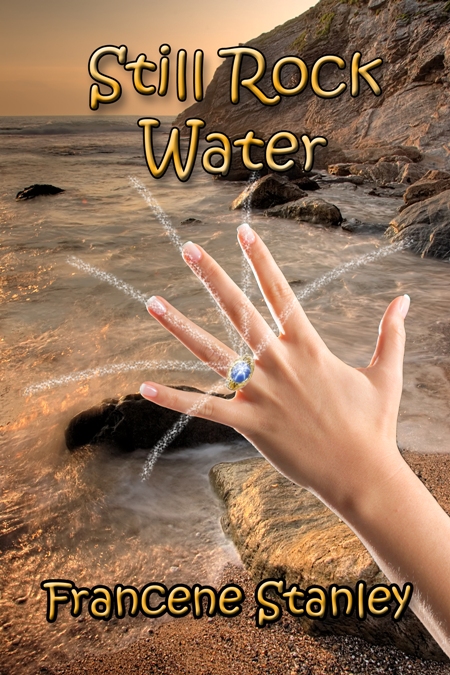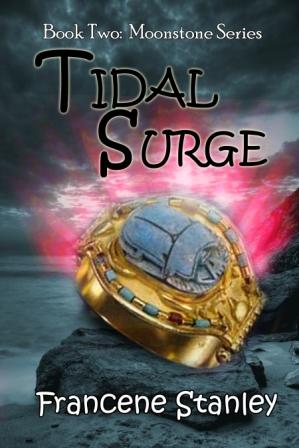The treasure of San Gennaro is said to rival Britain's Crown Jewels and those of the Russian tsars in value. Kings, popes and emperors have all sent valuable tributes to the saint's shrine. Armed guards accompanied the 70 pieces to a museum in Rome. For more on this story.
Statues and religious items such as golden chalices were donated over several centuries by many crowned heads of Europe to the patron saint of Naples, San Gennaro, or Januarius in English.
 BBC - The Mitre of San Gennaro
BBC - The Mitre of San Gennaro But perhaps the centerpiece of the exhibition is the large necklace of San Gennaro, composed of thousands of gems, which was begun in 1679. Considered one of the most exquisite items of jewelry in the world, it has been forged from several ornate pieces, including a jewel-studded cross donated by the French emperor Napoleon Bonaparte.
But for much of that time, the treasure was kept away from the public eye in a vault in Naples cathedral. Which makes it rather pointless. What use does accumulated treasure and wealth serve if it's simply stored away?
 BBC - The necklace of San Gennaro
BBC - The necklace of San Gennaro I assume whoever was in charge announced their decision to the cheering of massive hordes.
Naples is one of the oldest continuously-inhabited cities in the world. Bronze Age Greek settlements were established in the Naples area in the second millennium BC. Refounded as Neápolis in the sixth century BC, the city became a lynchpin of Magna Graecia, merging Greek culture into Roman society. Naples remained influential after the fall of the Western Roman Empire, serving as the capital city of the Kingdom of Naples between 1282 and 1816. Thereafter, it united with Sicily until the unification of Italy in 1861. Now, Naples is the capital of Campania and the third-largest municipality in Italy, after Rome and Milan. Around 960,000 people live within the city's administrative limits.
Over 55 movies have been made of Naples, including Treasures of San Gennaro, a 1966 Italian comedy film; a funny classic story of a perfect robbery plan gone wrong in the Italian way. Let's hope the armed guards do their job during this latest exhibition. The treasure should be displayed for all to see, rather than stolen by hi-tech criminals to break up and sell for their own profit. Nobody could afford to buy the items in their present form.
Treasure elicits awe and excitement. Most of us could never afford to own anything more than a few items of jewelry. The exhibition contains pieces accumulated over time, and, like all historical items, can't be split and returned to whence it came. The most we can hope for is a glimpse of the sparkling hoard—to stare and wonder about a time gone by.

 RSS Feed
RSS Feed






